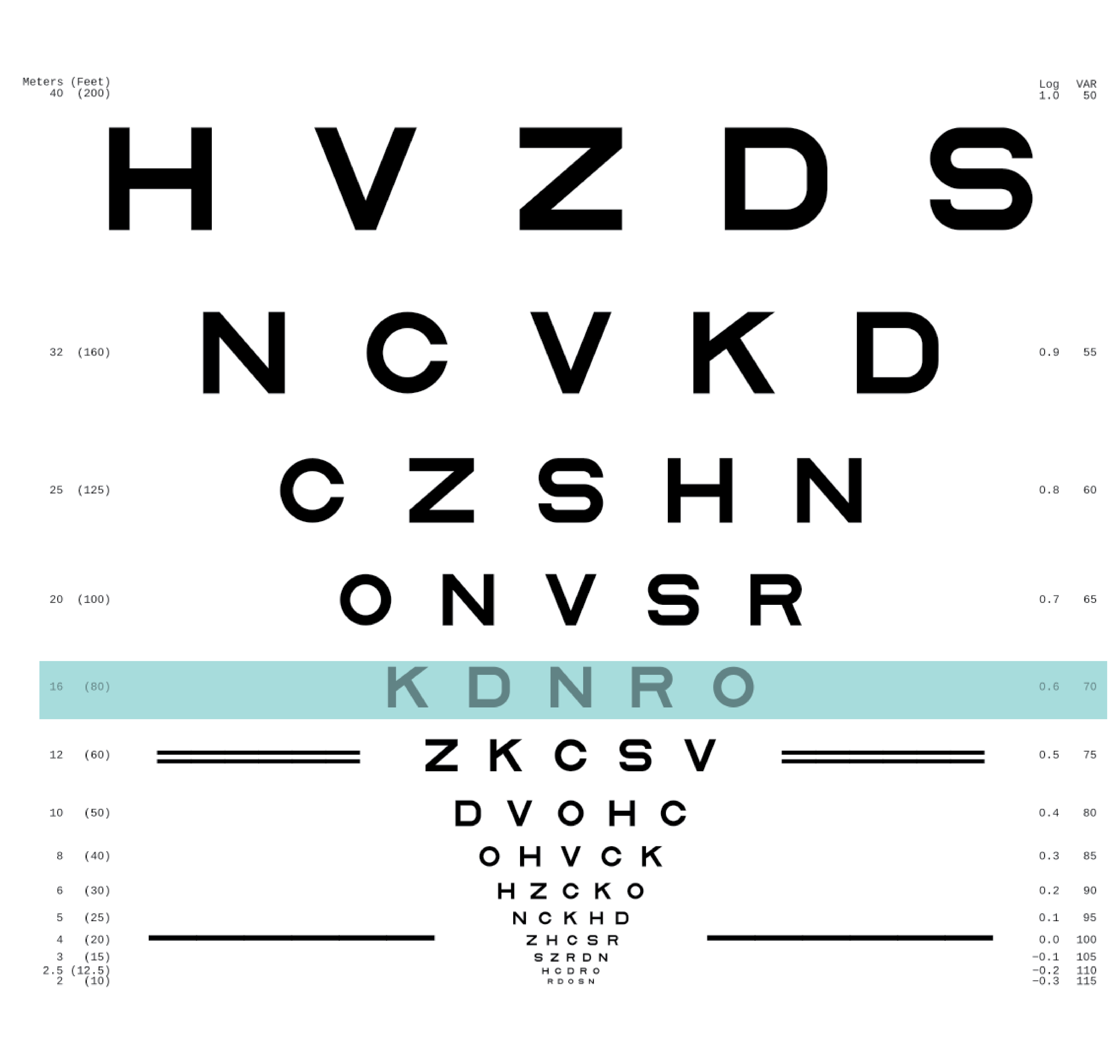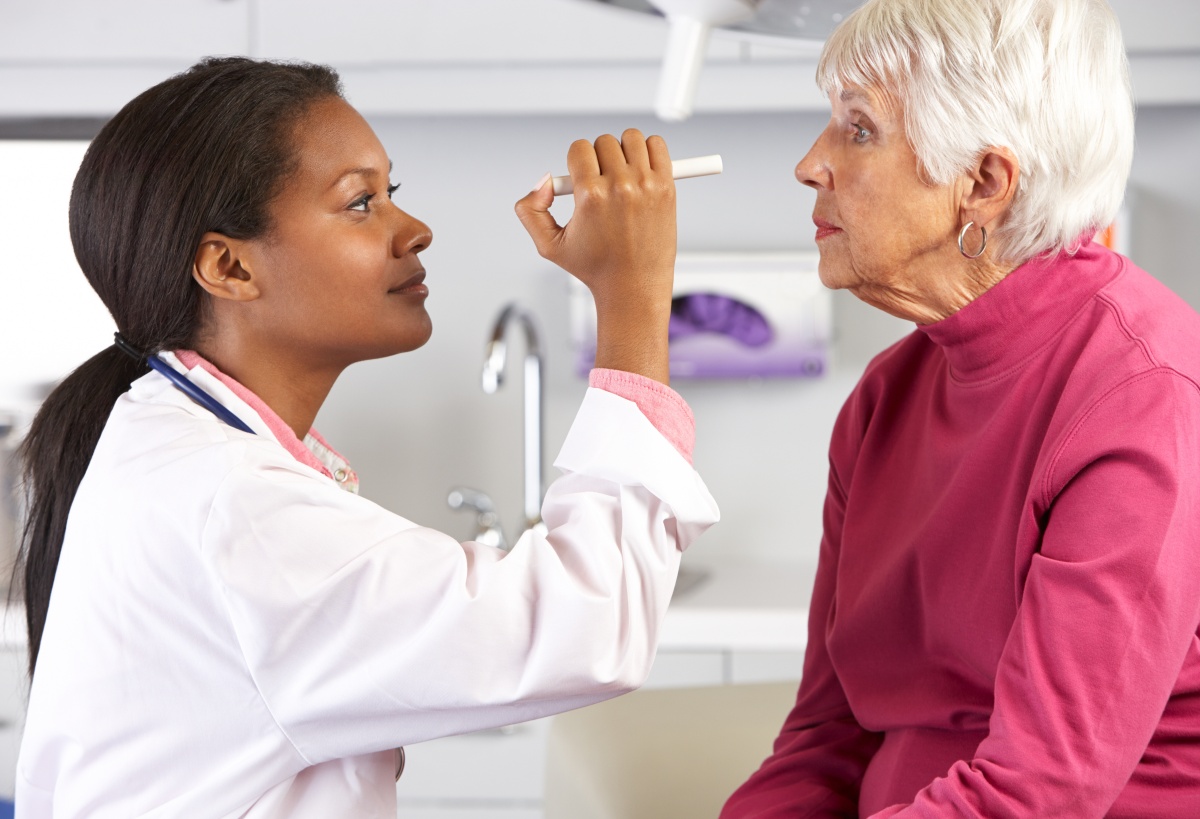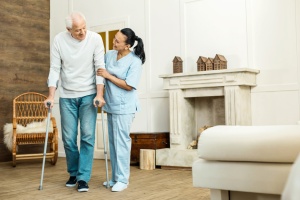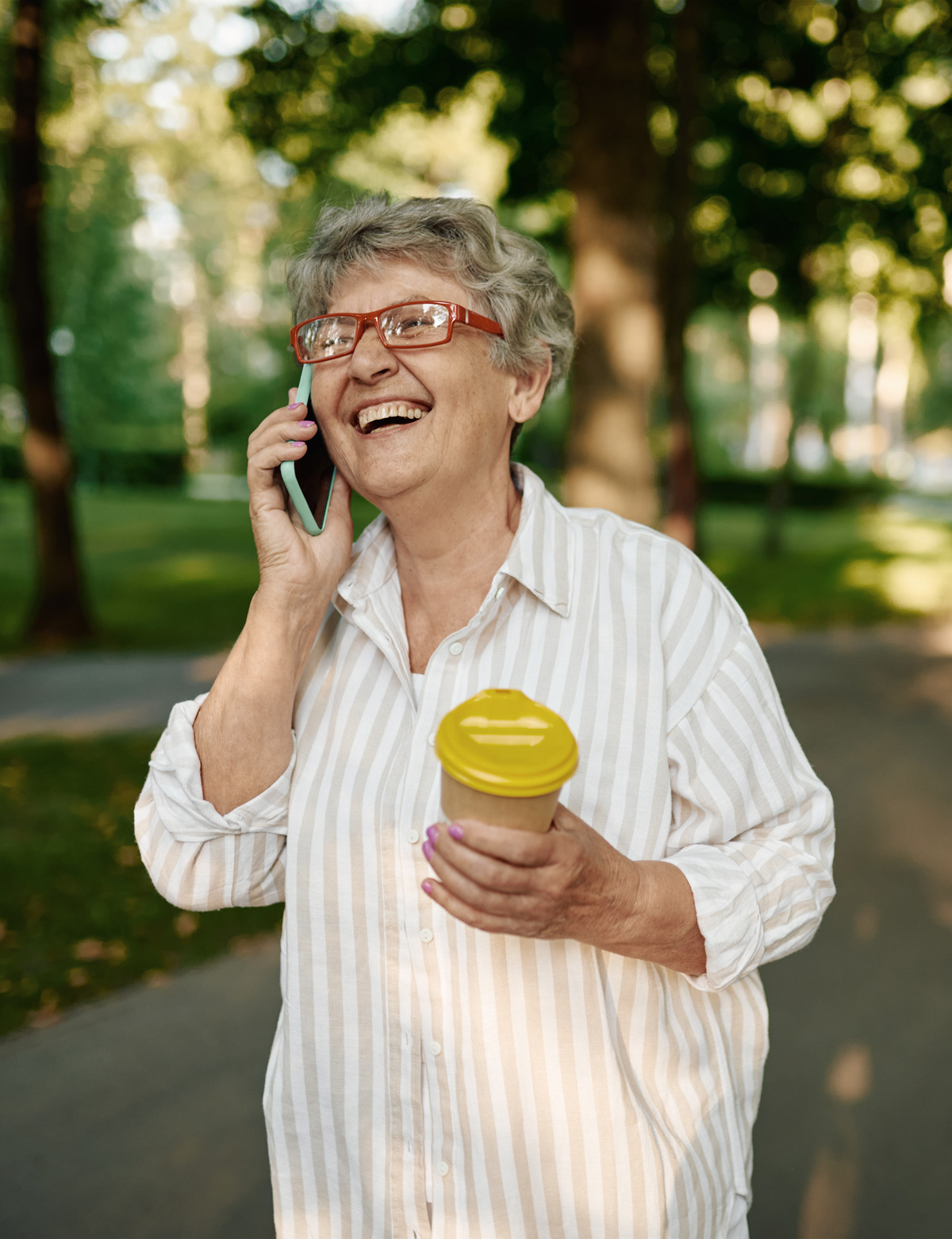For seniors, falling can cause serious injury. Fall prevention for seniors is the focus of Aria’s latest blog series. One in four individuals over the age of 65 will suffer a fall this year.[1] Falling is extremely dangerous for seniors, one in five who suffer a fall will end up with a serious injury including broken bones and head trauma.[2],[3] Three million fall victims will end up in the emergency room and almost a third of those trips will end up with short to long-term hospitalization.[4]
Fall risk is precipitated by more than just physical mobility. Vision is closely linked to fall risk because it affects balance and seniors’ ability to navigate while moving around. Ensuring your residents have the best possible vision can help reduce their risk of falling. This article will cover some basic tips for detecting vision problems before a fall happens. More than 1 in 4 seniors with vision impairment have recurrent falls and are at double the risk of a fall than seniors without vision impairment.[5]

Get an Eye Exam Annually
It’s imperative that your residents get a regular eye exam annually. The Centers for Disease Control (CDC) recommends specifically that all seniors have a dilated eye exam every year.[6] More than identifying near and far distance vision ability, the exam also will target the potential types of eye disease commonly found in the elderly (e.g., glaucoma, cataracts, age-related macular degeneration, and diabetic retinopathy). Seniors whose vision acuity is lower than 20/80, the highlighted row on the vision acuity assessment chart, are more than 1.8 times likely to have a fall than seniors whose vision acuity is rated higher.[7] Studies have found up to 64% of seniors in nursing facilities have vision impairment due to eye diseases like macular degeneration, diabetic retinopathy, glaucoma, and cataracts.[8] A regular visit with an optometrist can help ensure that your residents are seeing as well as possible.
Improve Lighting
According to the Lighting Research Center at Rensselaer Polytechnic Institute lighting for seniors should be around 300 lux(lx) (or 30 Footcandles) for them to be able to move about safely.[9] A lux is a measurement of the amount of light within a given area and cheap light monitors or even phone apps can be purchased to measure lux. Encourage your residents to use LED lightbulbs that produce intense white light. Seniors also struggle with contrast, so help them by ensuring that light is provided via indirect lighting (e.g., lampshades). Additionally, ensure that lighting around thresholds and stairs are among the brightest locations in your facility. While seniors should have dark rooms while sleeping, it’s also important that they have night lighting or motion-sensing lighting for mobility in the evening.[10] Finally, because it takes longer for aging eyes to adjust to changes in lighting, ensure that lighting is as uniform as possible and that you’re using LED lightbulbs as they turn on the quickest.[11]
Overcoming the Fear of Falling
About 50% of seniors with vision impairment said they were afraid of falling and had as a result limited their activity.[12] The best way to alleviate this fear is to speak with them. Identify the things that make them nervous or uncomfortable about their mobility and help address them if possible. Encourage activity that keeps them mobile and moving. Confidence is key to decreasing fear of falling, and that can only happen if you talk with your residents who have suffered falls and take time to address their fears.[13]
Conclusion
There are many factors that can cause a fall, vision is just one part of ensuring that your residents feel comfortable in their environment and reduce their fall risks. Take time to review common causes of falls with your residents on a regular basis and help them address the physical, mental, and locational hazards to fall risks. There are several strategies that can help reduce fall risk in the vision impaired. These include adequate lighting in resident rooms and common areas, removal of objects that may be difficult to see (e.g., trash cans), motion sensor lights in restrooms, wearing sunglasses when outside, and adjustment of shades to reduce sunlight glare. Comprehensive annual vision examinations are vital in reducing fall risk. For residents with eye disease, more frequent monitoring is essential to prevent further decline.
 Home Page
Home Page Home Page
Home Page

 Share to Twitter
Share to Twitter
 Share to Linked In
Share to Linked In




